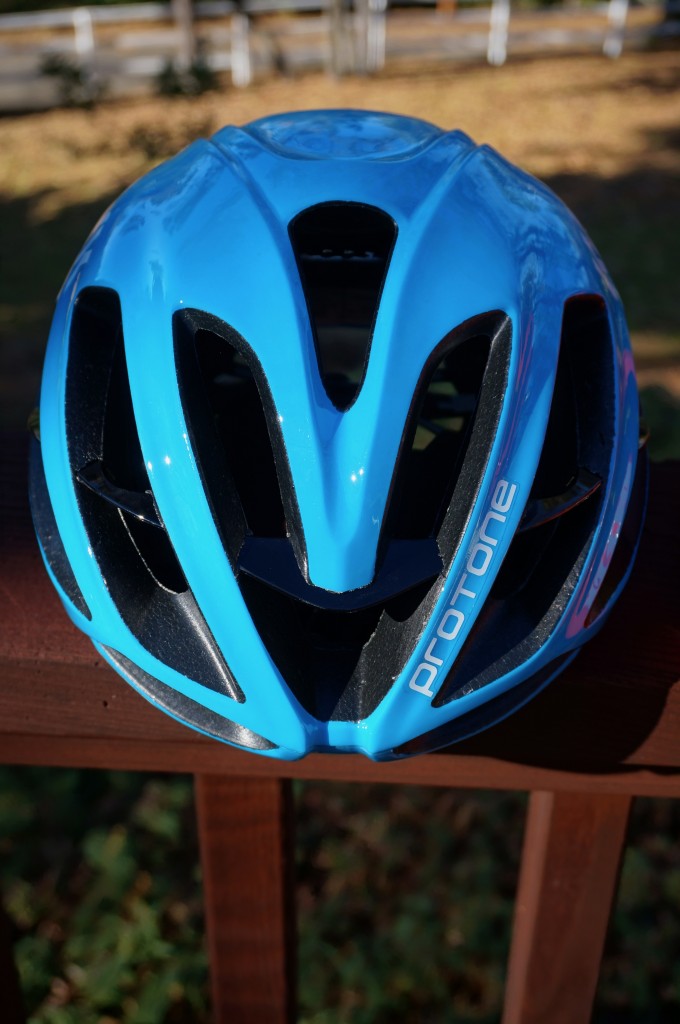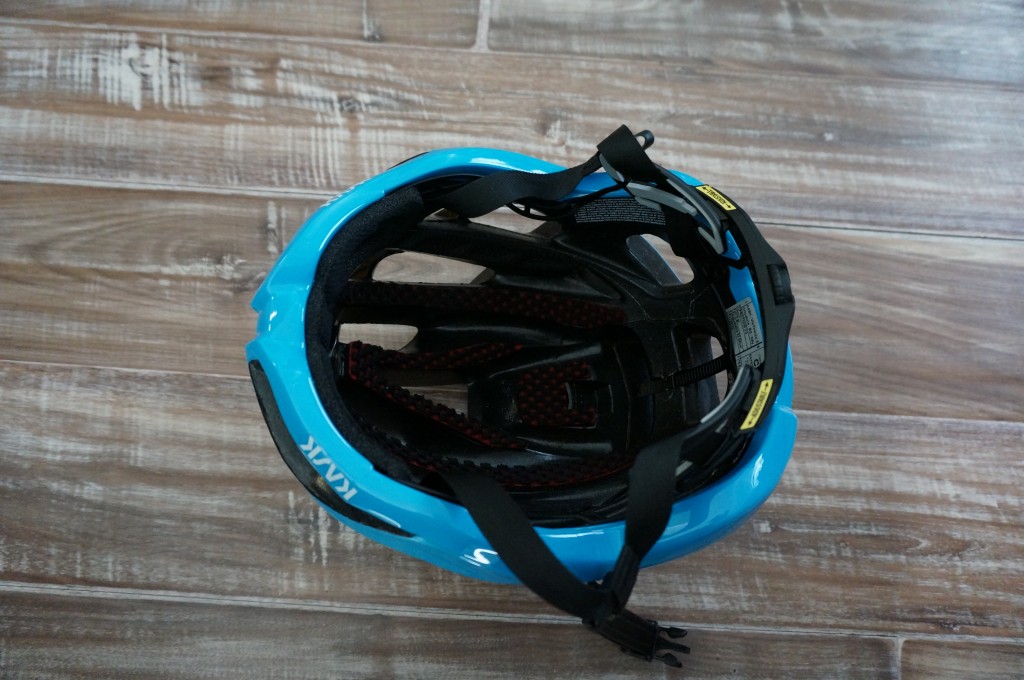Kask Protone Review
Our Verdict
Our Analysis and Test Results
The Kask Protone stands out for its durable, lightweight construction and comfortable design, but ultimately struggles because of a poor for and aft adjustment mechanism on the headband.
Performance Comparison
Comfort
We expected the Protone to be one of the more comfortable models in the test following our past experience with Kask products. Regrettably, that not the case. The main issue we experienced is a fore and aft adjustment system that does not lock in place, allowing the helmet to shift forward and backward while on the head. The headband strap system also has a bend near the temples that creates uncomfortable pressure points. Despite these complaints, this model does have very plush Coolmax padding, and a very comfortable leather chinstrap.
Adjustability
This model scores poorly due to a fore and aft adjustment mechanism that does not stay in place. Just touching the Protone while riding can cause it to shift forward or backward. In addition, it does not have an adjustable Y-buckles like many other high scoring competitors. The lack of adjustable Y-buckles made getting the straps evenly tensioned impossible for some of our testers. The rear straps have fixed anchor points, further limiting adjustability.
Weight
The Protone has a competitive weight of 268 grams in a size Medium, but there are other similar models in the same weight class that also include a Mips liner. When you take the durable construction of the product into account, the weight is actually quite reasonable for a semi-aero helmet.
Style
This is a nice looking helmet with some aerodynamic benefits. Several vents up front give it an almost traditional look, but from the side, the aerodynamic intentions are apparent, with a rounded top section free of vents. The Protone lacks rubber sunglass grippers found on other high-end models. We like the leather chin strap, and our testers found it to be very comfortable on the skin. The design is solid, except for the oft mentioned fore and aft adjustment system, which does not stay in place.
Ventilation
Overall, ventilation is adequate but falls short of other high-end performers in this metric. Many other models have upwards of 30 vents compared to 20 on the Protone. Other contenders also have more substantial headband suspension systems that maintain a few millimeters of space between the head and the EPS foam liner. Internal channeling is quite extensive on this model, which helps with ventilation at higher speeds. The extra heat build-up is most noticeable at lower speeds when compared to the higher scoring models in this metric.
Durability
The Protone is one of the most durable helmets that we tested. A polycarbonate shell protects the foam from damage. Though more of an aesthetic issue, it scores lower than a few competitors due to flimsy stickers that easily scratch and peel, compared to more durable painted-on decals. Also, the failure of the fore and aft adjustment system cost this model, deducting some points in the durability category.
Value
While this is a nice looking and well-ventilated helmet, we do not feel that it is a good value due to the poor design of the fore and aft adjustment system on the headband.
Conclusion
The Protone is a nice looking semi-aero helmet, but it suffers from poor adjustability and a lack of comfort.











